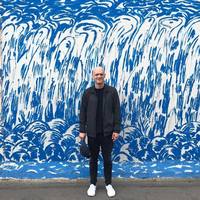Ian Wallace
Graduate Center of the City University of New York, Art History, Graduate Student
Research Interests:
Research Interests:
Research Interests:
Research Interests:
Research Interests:
Research Interests:
This paper explores the consequences of the " museumization " of a site-specific installation by the Polish-Argentinian artist Lea Lublin. 2 My interest is in the transformations that allow museums to coopt and reify works of art that... more
This paper explores the consequences of the " museumization " of a site-specific installation by the Polish-Argentinian artist Lea Lublin. 2 My interest is in the transformations that allow museums to coopt and reify works of art that were intended to take a critical stance toward the museum system; these transformations being carried out, on the one hand, in the name of conservation—preserving the work for the future—and, on the other, in the name of capital—turning an ephemeral event into a cultural commodity. If the neo-avant-garde practices of the postwar period expanded the traditional understanding of the art object to encompass performance, audience participation, and ephemeral events—often with the explicit aim of challenging the passive viewership endemic to the museum—museums have dealt with this period of art history by nevertheless crystallizing these works into objects of cultural and economic value. The result is a coming apart of the artwork as an object—one that is now, to borrow Martha Buskirk's word, not only contingent (dependent on scores, instructions, documentation, etc.), but also dispersed. As in the example I discuss here, the act of museum acquisition no longer only concerns the movement of auratic original artworks.
